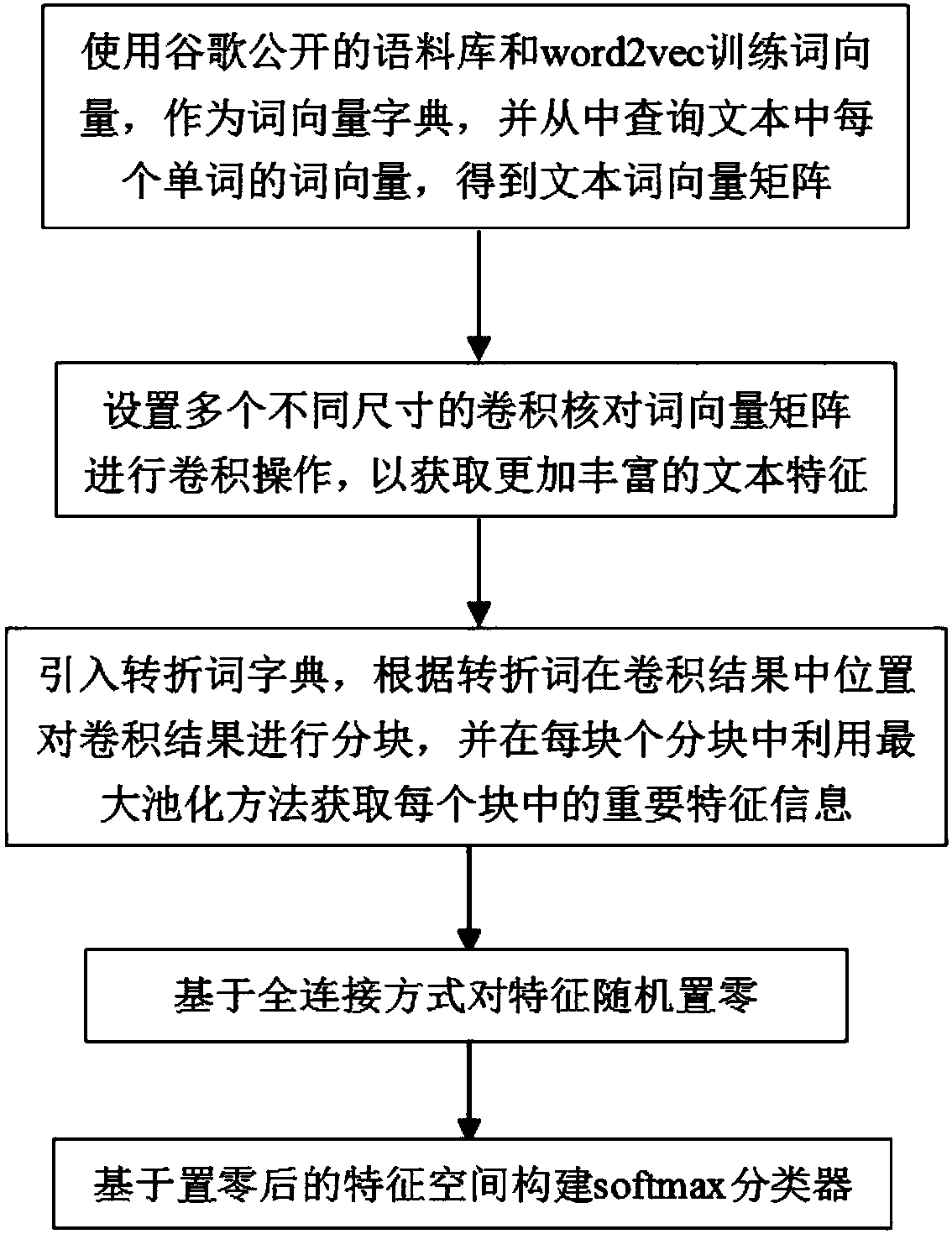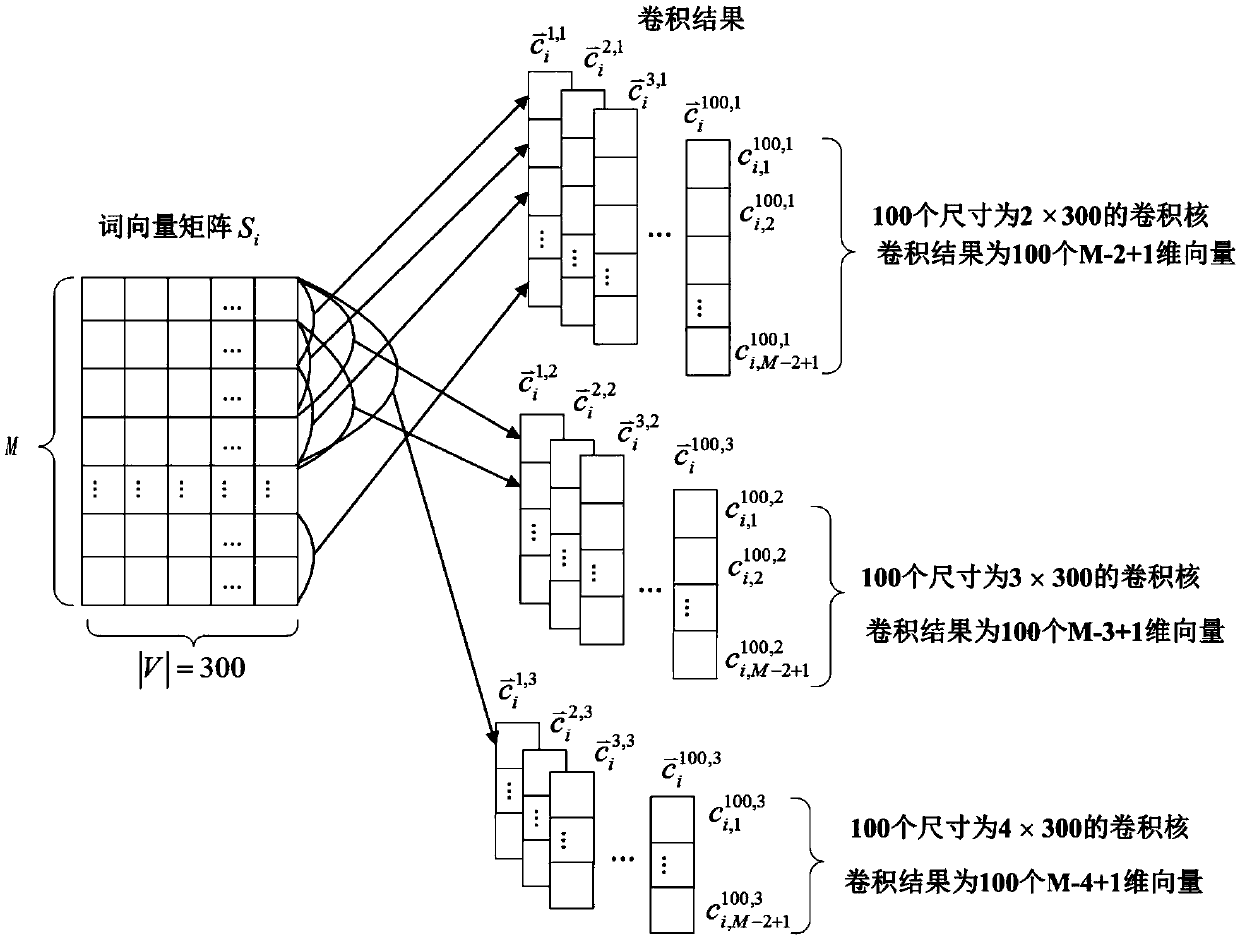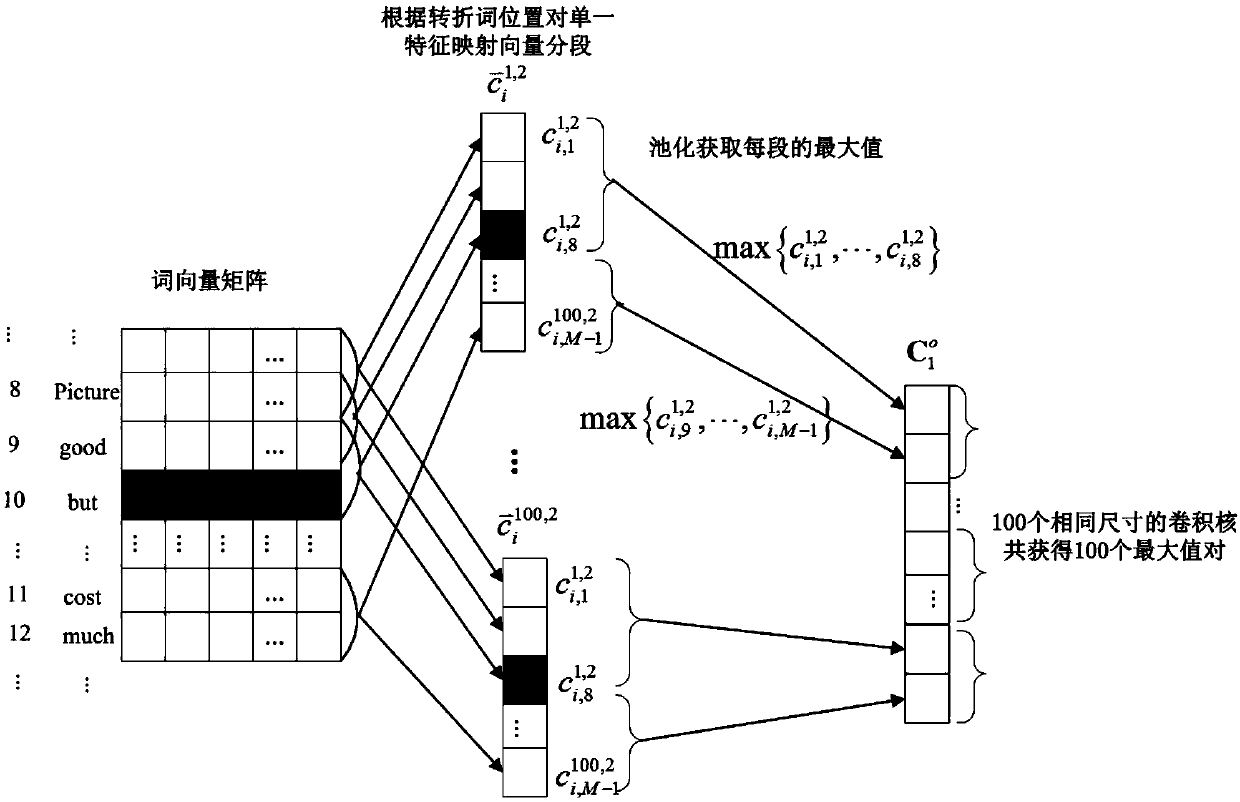Sentiment classification method based on adversative sentence semantic block partitioning mechanism
A technology of emotion classification and semantic blocks, applied in natural language data processing, special data processing applications, instruments, etc., can solve problems such as complex text emotion classification, ignoring sentence structure features, and difficulty in obtaining results
- Summary
- Abstract
- Description
- Claims
- Application Information
AI Technical Summary
Problems solved by technology
Method used
Image
Examples
Embodiment Construction
[0043] In this example, if figure 1 As shown, an emotion classification method based on the semantic block division mechanism of transitional sentences is carried out as follows:
[0044] Step 1: Word vector representation of samples in training set and test set
[0045] Step 1.1 Build word vector dictionary D
[0046] Obtain external corpus from the Internet and carry out training, obtain word vector dictionary D, be used for querying the word vector of training set and test set word; Based on GoogleNews corpus external corpus (about 100 billion words) in the present embodiment, utilize the word2vec that google discloses The corpus is trained, and the word vector library googlenews-vecctors-negative300.bin file obtained is used as the word vector dictionary D, and the dimension of the word vector is set to |V|, and in the present embodiment, |V|=300;
[0047] Step 1.2 Word vector representation of samples in training set and test set
[0048] Obtain |I| comment texts to fo...
PUM
 Login to View More
Login to View More Abstract
Description
Claims
Application Information
 Login to View More
Login to View More - R&D Engineer
- R&D Manager
- IP Professional
- Industry Leading Data Capabilities
- Powerful AI technology
- Patent DNA Extraction
Browse by: Latest US Patents, China's latest patents, Technical Efficacy Thesaurus, Application Domain, Technology Topic, Popular Technical Reports.
© 2024 PatSnap. All rights reserved.Legal|Privacy policy|Modern Slavery Act Transparency Statement|Sitemap|About US| Contact US: help@patsnap.com










